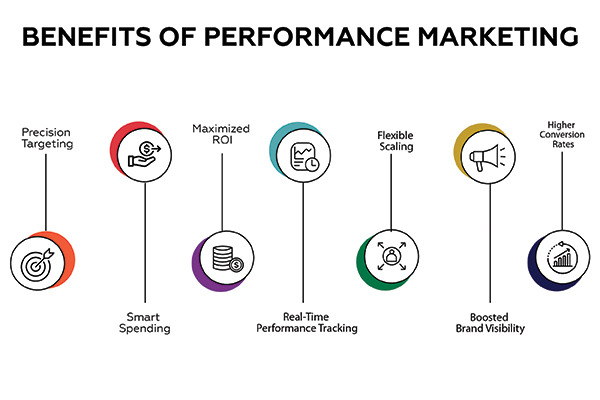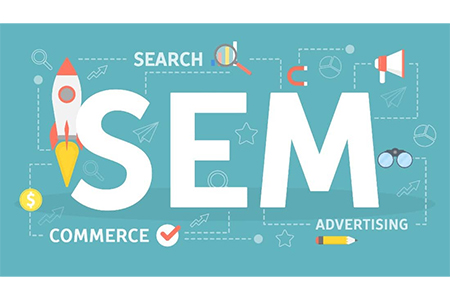Table Of Content

Performance advertising is a type of digital marketing where businesses only pay when specific, measurable actions take place, such as clicks, leads, or sales. This model focuses on results, unlike traditional advertising, which often charges based on the number of times an ad is seen, regardless of its actual impact. By paying only when people take action, advertisers can better manage their budgets and understand the effectiveness of each ad.
Performance advertising is a popular strategy in the digital age, using data to track customer interactions and measure results in real-time. It allows businesses to set specific goals—like increasing website traffic, generating leads, or boosting sales—and only pay for ads that achieve these targets.
In this article, we’ll cover everything you need to know about performance advertising and how to make it work for your business.
How Performance Advertising Works?

Performance advertising involves several components that work together to create an effective system for driving results. Here’s a breakdown of how performance advertising functions and what makes it successful:
Key Components of Performance Advertising
Tracking and Analytics
The base of performance advertising is tracking and analytics. When an ad is created, there will be tracking codes - for example, pixels and cookies put within the ad or tied down to the advertiser's website itself. These tracking tools collect information about the click, registration, or purchasing rate behaviors related to the ad. It is this type of information that helps advertisers' customers formulate their strategies more precisely.
The tracking and analytics platforms make available reports on performance metrics, guiding advertisers on how effective every ad is. Google Analytics can also measure how users interact with ads, including an indication of how much time a user spends on a site, what actions are performed, and how likely a user is to return.
Metrics and KPIs (Key Performance Indicators)
Performance advertising relies heavily on metrics to determine success. Key performance indicators (KPIs) are specific, measurable values that show how well an ad campaign achieves its goals. Some common KPIs in performance advertising include:
Click-Through Rate (CTR): The percentage of people who click on an ad after seeing it. High CTR indicates the ad is engaging and relevant to the audience.
Conversion Rate: The percentage of users who complete a desired action, like signing up or purchasing, after clicking the ad.
Cost Per Click (CPC): The cost incurred each time a user clicks on the ad.
Cost Per Acquisition (CPA): The average cost to acquire a customer through the ad campaign.
Return on Ad Spend (ROAS): The revenue generated for each dollar spent on the campaign, helps businesses understand profitability.
By focusing on these metrics, advertisers can see what is working and identify areas for improvement. KPIs provide a clear framework for assessing campaign performance and aligning advertising strategies with business goals.
Benefits of Performance Advertising

Cost-Effectiveness

Perhaps the greatest advantage of performance advertising is the pay-for-performance model, where the advertiser pays only for a user's action, such as clicking an ad or buying after clicking the ad. The model results in having no risk of paying for impressions that are not yielding anything. For example, if an ad is viewed by 1,000 people but only 50 click on it, the advertiser pays only for that click on 50 of them.
Because advertisers pay only for actual results, the model of performance advertising happens to be very cost-effective, especially for small business enterprises that have fewer budgets. Every dollar spent is supposed to lead to something specific; thus, businesses will find it easier to handle costs and allocate budgets toward working on effective campaigns.
Measurable Results

Performance ads allow the business to track in real-time how effective its ads are. It is through this statistical way that advertisers get to see their campaign performance and, based on the data analyses, make decisions as such. One learns from CTR, conversion rate, and CPA, which provides the client with insight into the user behavior and knows which aspects of the ad were effective.
Measurable results allow the advertisers to justify their ad spend by showing the impact of the advertising work done. Advertisers will also be in a position to quickly identify underperforming ads and make optimization for better performance.
Targeted Reach

The concept of performance advertising is to enable advertisers to target people aligned with their interests, behaviors, or demographics. On Google, Facebook, and Instagram, the targeting options allow advertisers to create ads that appeal to their audience. For instance, a beauty brand will target users who are interested in skincare, and a fitness brand will target users who have expressed interest in health and wellness.
Targeted reach means that the ads reach people who have a higher chance of engagement, which brings better opportunities for conversion. Accurate targeting enhances user experience as people are shown relevant ads. As a result, the return on investment will be higher, and the engagement rates will improve.
Examples of Performance Advertising
Performance advertising includes several types of campaigns, each offering unique ways to drive results. Here are three popular examples:
Search Engine Marketing (SEM)

Search Engine Marketing (SEM) is a type of performance advertising that involves placing ads on search engines like Google. Advertisers bid on keywords related to their products or services, and their ads appear when users search for those terms. For example, a local florist might use SEM to advertise flower delivery services to users searching for “flower shop near me” or “same-day flower delivery.”
SEM allows advertisers to reach users actively searching for their products, making it highly effective for driving conversions. The performance model in SEM often relies on cost-per-click (CPC), where advertisers pay only when a user clicks on the ad.

Performance-based advertising can be accessed via Facebook, Instagram, and Twitter. It allows for the possibility of creating ads based on the demographics, interests, or online behavior of the people targeted. Social media ads can include pictures and videos and even be used with interactive elements to ensure they capture the audience's interest.
For example, a restaurant can use social media ads on Instagram to foodies in a certain region. Engagement could be tracked with clicks and conversion rates. Brands of all sizes have been able to achieve measurable success using social media ads, given their ability to reach highly targeted audiences.
Affiliate Marketing

Affiliate marketing is a performance-based strategy where businesses partner with affiliates (individuals or companies) who promote their products or services. Affiliates earn a commission for every sale or lead generated through their promotional efforts, such as blog posts, reviews, or social media mentions. This model allows businesses to expand their reach without upfront costs, as they only pay affiliates when a sale is made.
For example, an online clothing retailer might partner with fashion influencers who promote its products on social media. When a follower of the influencer purchases through their unique link, the influencer earns a commission. Affiliate marketing is popular in e-commerce because it allows businesses to reach new audiences and drive sales through trusted recommendations.
Common Misconceptions About Performance Advertising
It's Only for Large Brands
Common assumptions about performance advertising are that they only come in handy for large brands, where a large budget can make all the difference. This is not so. Performance advertising is accessible and beneficial for businesses of all sizes, including small and medium-sized businesses. While this might be within the reach of bigger brands through some levers they can pull with resources added, performance advertising platforms like Google Ads and Facebook Ads have been developed considering the existence of vast types of budgets and objectives. They enable businesses to set daily spending limits, alter bids, and target only audiences that count. This has given small brands the chance to put up with the action of performance advertising without shelling out too much money.
But, performance advertising is often the best bet for SMBs in the sense that it provides measurable results for each dollar spent. For smaller businesses, this allows them to track their ads' effectiveness in real-time and respond by making adjustments in campaigns to hopefully see improvement. This has businesses maximizing their ad spend by reaching the right audiences with manageable outlays. Therefore, performance advertising is not a product solely suited for big business; it is as relevant and effective to the others as to the biggest companies.
Performance Advertising is Just PPC
Another myth is that performance advertising is only pay-per-click (PPC) advertising. Although PPC is one of the most common forms of performance advertising, it only makes up part of the overall category. Performance advertising includes any ad format in which the advertiser only pays for a specific action by the user–clicks, conversions, installs, and so on. So, outside of PPC, performance advertising also includes formats such as in-app ads, social media ads, affiliate marketing, and even some display ads.
Each of the formats serves distinct purposes and can help reach different types of audiences. For example, in-app ads could target the direct user of mobile users, whereas social media ads would help target people according to their interests. Expanding its scope beyond paid-per-click, performance advertising enables businesses to permit themselves to make choices for the methods that best fit their desired goals-whether it is for driving traffic, generating leads, or selling more. Thus, rather than a narrow PPC play, performance advertising is a flexible strategy with several different channels for driving measurable outcomes.
Conclusion
Performance advertising is one of those extremely effective strategies marketers can use to leverage measurable results in digital advertising. It means that every buck invested in advertisements is working toward some kind of clear goal, which focuses on specific actions and data-driven campaign optimization. It goes further beyond search engine marketing and social media ads to affiliate marketing, providing businesses with the necessary tools to successfully reach their target audience.
If you’re looking to boost your brand’s growth through targeted, results-driven strategies, Excellent Publicity is here to help. As a leading advertising agency, we specialize in delivering impactful performance advertising campaigns that maximize your investment.
FAQs
The main platforms for performance advertising are Google Ads, Facebook Ads, and Instagram Ads. These channels allow targeted outreach and measurement of outcomes. The popular others are LinkedIn and Twitter, as per the business requirements.
Success might be determined through the following metrics: conversion, CTR, and ROAS. Use analytics tools to view your ad performance. Success means you have reached your goals - sales or leads.
Performance advertising focuses on immediate results such as clicks, leads, or sales. A small business may be able to measure traditional advertising, but the approach is broader and not necessarily focused on immediate results such as with performance advertising, which works directly from results. You pay for results rather than pre-paid expenses as with traditional ads.
Yes, performance advertising does benefit small businesses through the targeting of the right audience and cost control. Performance advertising allows them to level the competition with bigger brands. Small businesses only pay when they see results, which is highly budget-friendly.
E-commerce, technology companies, and service-based businesses apply performance advertising when seeking measurable outcomes. Companies with high growth or clients' direct actions are highly responsive to performance advertising. Indeed, any business that wants performance-based results and has customer-centered and measurable outcomes is well-suited for performance advertising.



